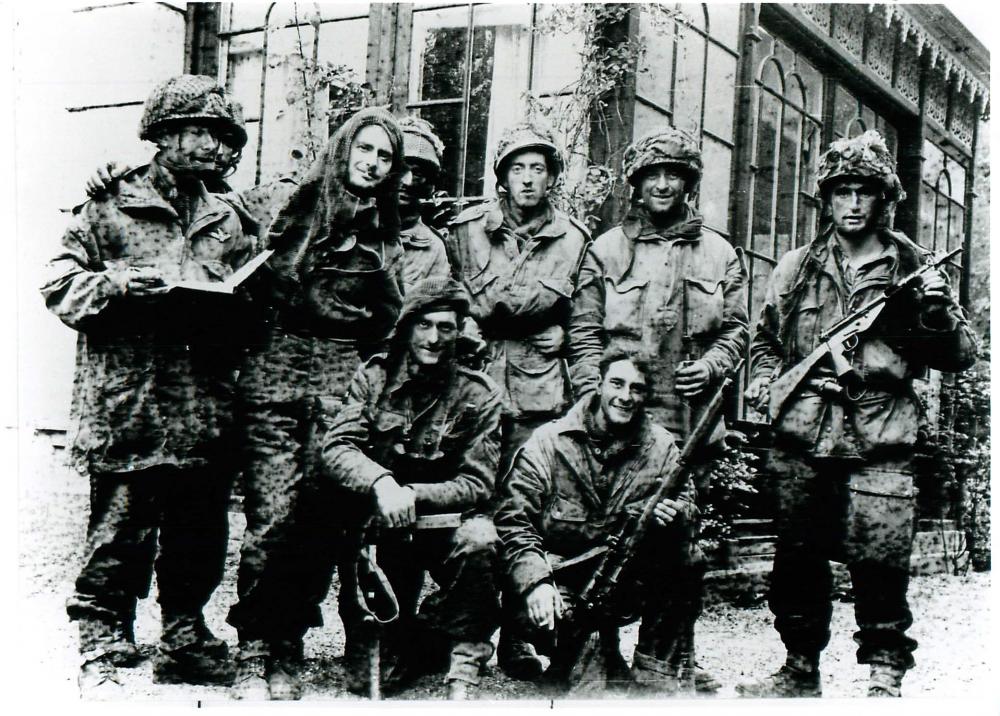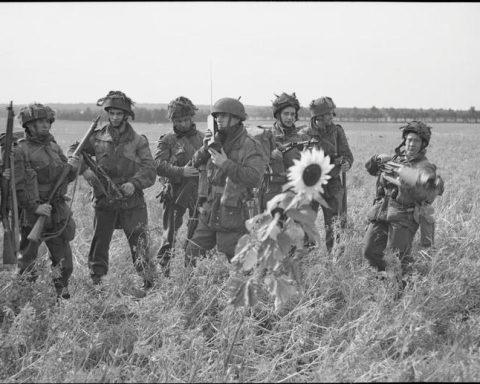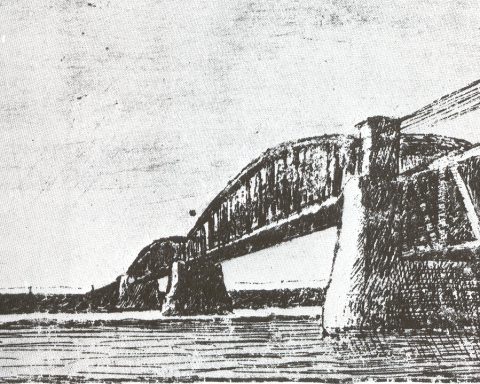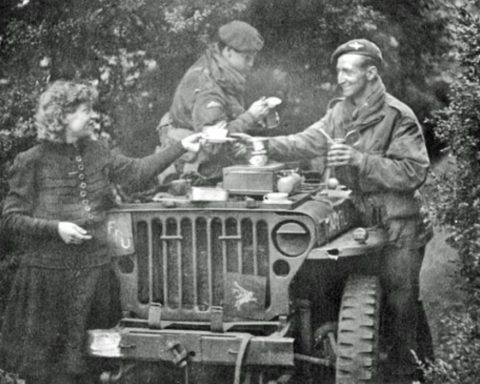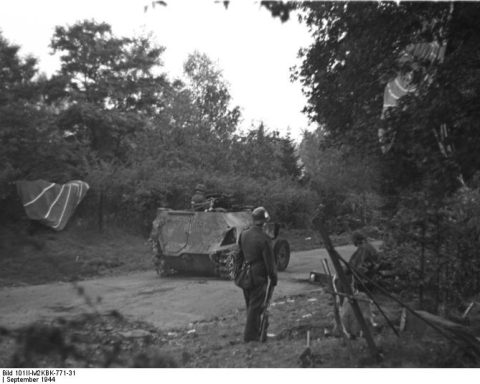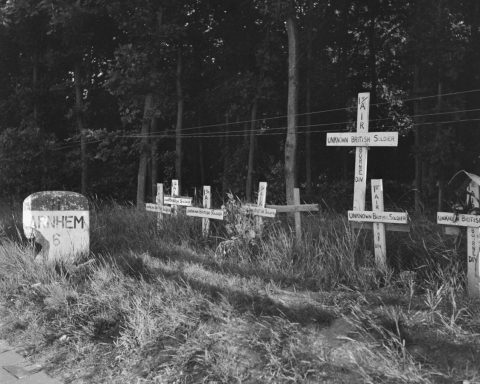The British airborne troops had been in action continuously for six days on Saturday, September 23. Not much was left of the once proud 1srt British Airborne Division. Of the division’s more than 10,000 elite troops who landed at Wolfheze on September 17 and 18, fewer than 4,000 were still fit to fight.
The rest of the British paratroopers had been killed, wounded or captured. A total of 1,445 soldiers from the Airborne division died. 4,300 British paratroopers were taken prisoner and a total of 2,000 were wounded, the majority of whom were also taken prisoner.
However, the British perimeter in Oosterbeek, where the British had withdrawn, held firm. Although the German pressure on the British positions remained great, the Germans had refrained from major attacks on the British positions after Thursday, September 21. An attempt was made to force the British to their knees through mortar shelling and sniper shooting.
However, on Saturday 23 September there were still attacks on British positions, especially on the eastern side of the British sector. However, with the help of efficient and very accurate artillery fire given by the British near Nijmegen, those attacks were repulsed.
Urquhart sent this report to headquarters in Nijmegen on the morning of September 23:
“Irregular shell and mortar fire during the night. Otherwise little change in bridgehead. Several infantry attacks with mechanized guns and tanks, with heavy fire support from mortars and guns now underway in northeast corner of bridgehead. Brought 50 Poles across the river last night. Infantry shock troops of the 43rd Division arrived on the southern bank. Hope of crossing during fog. Serious stock shortage. Majority no more rations since 24 hours. Low ammo. Possibly supply of ammunition on arrival of group from the south.”
Most of the German attacks focused on a single house that the Germans thought was poorly defended. In most cases the Germans came home from a rude awakening, as is evident from the story below, by Staff Sergeant Les Frater. Frater was stationed in a house on Stationsweg.
“We heard a lot of screaming and they came running. They screamed and they screamed and this time they reached our building. I saw them through the iron bars of the front door and shot through the hall at close range. I fired as fast as I could.
Others, some with even less cover than I, fired at the attackers from other places in the house. It all seemed to be over quickly. I was amazed that we had survived this again. What I felt had turned the battle in our favor was the conduct of our lieutenant. During the attack he had run upstairs to throw hand grenades at our attackers from the window, while he himself had no cover.”
Snipers remained a major problem for British forces. Martin Middlebrook, in his book on the Battle of Arnhem, quotes Staff Sergeant George Milburn as telling how a sniper was killed by a glider pilot near Hartenstein.
“One of our pilots thought he saw a sniper up in a tree. He had a gun that he loaded with a full magazine. He took careful aim and emptied the entire 28-round magazine.
The sniper fell straight down and landed on the ground with a thud. But that pilot said: ‘be careful. Maybe he’s not dead yet.’ Now that’s a typical example of macabre gallows humor. That German was riddled with bullets and had fallen at least twenty feet. We just laughed about it again.”
White flag
A remarkable incident occurred that afternoon at the Utrechtseweg. At the intersection of Utrechtseweg and Stationsweg, a German armored car had appeared with an officer waving a white flag.
General Hackett was called in to speak to the German officer. The German explained that they planned to launch an attack at this intersection. “It is my intention to put your forward positions under mortar and cannon fire.”
Hotel Schoonoord was located on the corner of the intersection, which served as an emergency hospital. “We know you have wounded people there, and we don’t want them to be threatened by our concentrated fire. I request that you move your forward positions 600 meters back.”
A bewildered General Hackett replied that he would first have to discuss this with his commander. It was agreed to meet again at the intersection at 3 o’clock in the afternoon.
Hackett laughingly told Urquhart in the Hartenstein hotel what the German had proposed. Although the German’s request was courteous, it was also nonsensical. If the British had agreed, the Hartenstein hotel, where the division headquarters were located, would have been 200 meters behind the German front line.
And so at three o’clock Hackett informed the German officer at the intersection that unfortunately he could not comply with the request and that the aid station had to accept the risks.
A little later the first German mortar shells indeed landed near the intersection.
“A number of wounded were killed or reinjured in their beds,” reported Colonel Warrack, who was in charge of the emergency hospital in Schoonoord.
During the attack, a few houses were captured by the Germans and the Schoonoord hotel fell into German hands. The Germans allowed the British doctors to do their work, but stationed armed soldiers at the entrance.
The capture of Hotel Schoonoord led to the bizarre situation that slightly wounded British soldiers entered the dressing site, which was actually in German territory, and after their treatment walked back to the British sector to take up their position again.
In his book about the Battle of Arnhem, the British historian Antony Beevor tells of another anecdote that well reflects the bizarre situation in Oosterbeek during the aftermath of the Battle of Arnhem.
When there was no fighting, many British soldiers occupying a house in Oosterbeek played gramophone records.
An Austrian soldier claimed that when their record was finished, the British shouted in the direction of the Germans: “Play another one, Fritz!” The Germans then played a record and then shouted to the British: “Play another one, Tommy!”

